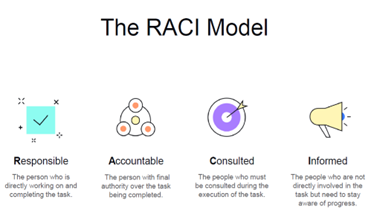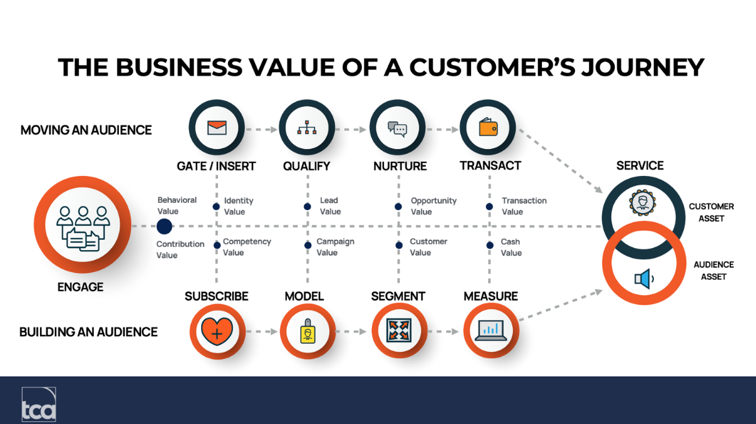Ali Orlando Wert has led multiple content teams at high-growth companies fueled by acquisition. Although these teams are often pieced together from multiple acquired companies, they must operate as one.
Moving quickly to that point can expose flaws in processes, Ali says. Balls get dropped, and things fall through the cracks. Finger-pointing begins. People make statements like, “That’s not my job.” Teams lose their nimbleness and get overwhelmed by last-minute requests.
It can feel like the marketing house is on fire.
To douse that fire requires creating a different kind of spark, and Ali shared her experiences doing just that at Content Marketing World. In her presentation, Making Work Flow: How to Build Critical Content Operations to Scale Your Strategy, she covers swim lanes, silos, and scalability.
Swim your lane: Define roles and responsibilities
When roles are unclear, you often hear one of these statements:
- “Please just do your job.”
- “Please stop doing my job.”
Ali says both responses result from a lack of understanding of the team/">team’s roles and responsibilities. The solution involves two steps. First, get organizational buy-in on the roles and responsibilities. Second, document them based on projects and processes.
RACI model
Though the process requires only two steps, you must invest time into executing them. Ali’s recommended solution is the RACI (pronounced “racy”) model.

The RACI model encompasses four elements:
- Responsible — the person who is directly working on and completing the task
- Accountable — the person with final authority over the task being completed
- Consulted — the people who must be consulted during the execution of the task
- Informed — the people who are not directly involved in the task but need to stay aware of progress
Ali suggests a few ways to pull together your organization’s RACI model:
- In-person workshops
- Virtual whiteboards
- Collaborative documentation (e.g., Google Docs, Notion)
Here’s what a RACI model could look like in chart form:

The top row includes column labels for project deliverable, product manager, strategist, and designer.
The left column lists the project deliverables (design the sitemap, design the wireframes, create the style guide, and code templates). Under each role, an R, A, C, or I (responsible, accountable, consulted, or informed), identifies the person’s responsibility in that initiative.
Team roles and responsibilities
While RACI is useful for documenting roles on processes and projects, Ali also recommends defining individuals’ roles and responsibilities at a broad level.
“If you’re a company or team that has grown really quickly through acquisition, it’s surprising how unclear people might be on their own job and other people’s jobs,” she says.
Ali recommends gathering teams (including marketing leaders) to discuss roles and responsibilities. These important discussions can:
- Surface areas of disagreement.
- Uncover gaps with no owner.
- Provide visibility into each team’s work.
- Align priorities across teams.
Break down silos: Work together toward shared goals
How do you know if your organization experiences silo problems? See if anything on Ali’s list rings true:
- Departments are antagonistic toward each other.
- Too many instances of duplicate work occur.
- Tasks regularly slip through the cracks.
- Accessing vital information is often difficult.
- Teams appear to be working at cross purposes.
Once you’ve identified silo problems that exist, follow Ali’s advice to break them down.
Content mission statement
A content mission statement can provide clarity to all the silos, which is especially important after multiple acquisitions. It should contain these elements:
- Audience — who you aim to help
- What you deliver — the kind of information you provide
- Outcome or benefit — what audience can do because of your content
“As a team, we work through our content mission statement and align on the audiences we’re trying to serve, what kind of content we’re going to deliver for them, and what we want the outcomes to be,” says Ali.
In addition to a documented mission statement, Ali recommends collaboratively answering these questions:
- Who are you targeting?
- What does success look like?
- What tactics will get you there?
- How does this align with marketing objectives?
- How will you measure success?
- How will you report on progress?
- What targets do you think you can achieve?
- What budget will you need?
Process workshop
At Appfire, where Ali currently works, several people across different marketing groups meet for an in-person marketing campaign process workshop. The participants were practitioners who cared about optimizing processes and breaking down silos.
The workshop included three phases:
- Pre-work: Gathering challenges from across the affected teams
- Workflow mapping: Detailing the campaign process using the RACI model for every step
- Campaign briefs: Creating a document with all the relevant details to execute a campaign
After the workshop, the team turned the campaign briefs and workflows into templates in the project and document management systems.
Results and templates
The team’s efforts to break down silos saw immediate results. “We’ve mapped out all of our workflows. We’ve built out a brand-new deliverable template in our project management system. We made some decisions to change systems,” Ali says.
“We meet for an hour a week, and we just keep chipping away in small pieces. So, it doesn’t have to be a huge commitment of resources.”
Scaling: Build sustainable operations
You have defined roles and responsibilities, published a content mission statement, and addressed the silos, but you’re still not done. You now should tackle the team structure, consider a content council, and address capacity planning to support scaling your operations.
Team structure
Establishing the right team structure is key to scaling your content operations, Ali says.
When structuring content teams of any size, here are a few approaches Ali says she’s found to be effective:
- Hiring content specialists who work on both strategy and content creation
- Aligning content specialists to product or solution areas
- Pairing content specialists with a product marketing partner
- Leaning into individual team members’ strengths and areas of interest
In larger teams Ali has also had success with these approaches:
- Splitting out editorial vs. strategy managers
- Having a dedicated operations lead to manage projects and resourcing
- Leaning into freelancers and agencies to supplement in-house resources
- Creating dedicated team leads for different geographies
Content council
At one company, Ali built a content council with the help of CMI’s consulting arm, The Content Advisory. The council brought together cross-functional team members responsible for content in different parts of the organization.
Council members met to agree on a common philosophy for content, standards, and share their experiences, insights, and best practices.
Based on her experience managing a content council, Ali suggests the following:
- Choose participants who are content advocates and influencers.
- Ensure that leadership buys into the idea, and an executive champion exists.
- Create a council charter with clear objectives, roles, and responsibilities.
Capacity planning
If you struggle with knowing how much work your team can execute, when to hire added resources, and when to say no, you’ll benefit from capacity planning.
Ali recommends starting by benchmarking how long tasks take. Ask your team to use a free app or browser plugin for a couple of months to record their task and project time. Now, you have real-world data to plan accordingly.
With this real-world data, you can set expectations on team and individual workloads. Assign tasks to individuals based on their capacity. Then, build the case for additional resources if needed.
Operationalize your strategy
I love this statement from Ali: “Operationalizing the strategy is part of the strategy.”
She related a quote from Simon Sinek: “Passion alone can’t cut it. For passion to survive, it needs structure. A why without how has little probability of success.”
In other words, content leaders should elevate the importance of translating the strategy into the team’s daily practices. Optimizing content operations increases the value content marketing brings to the business.
As Ali says, “We all want to be successful. And one way we can make ourselves even more indispensable is by adding content operations to our toolkit.”
All tools mentioned in this article were suggested by the author. If you’d like to suggest a tool, share the article on social media with a comment.
HANDPICKED RELATED CONTENT:
Cover image by Joseph Kalinowski/Content Marketing Institute










